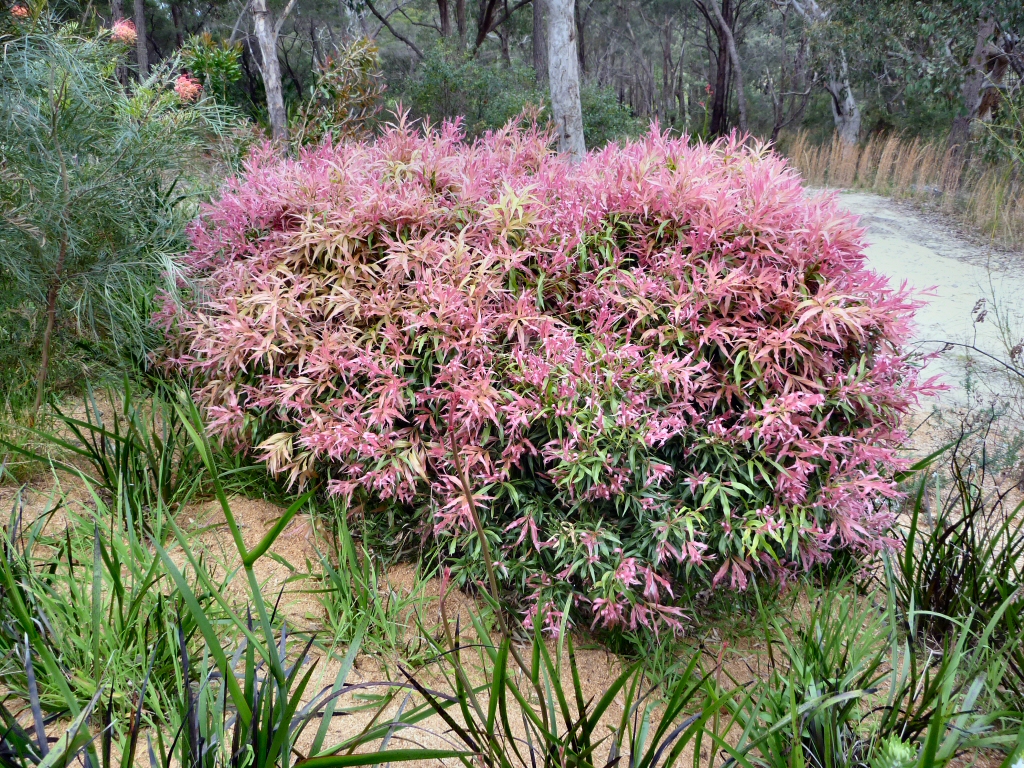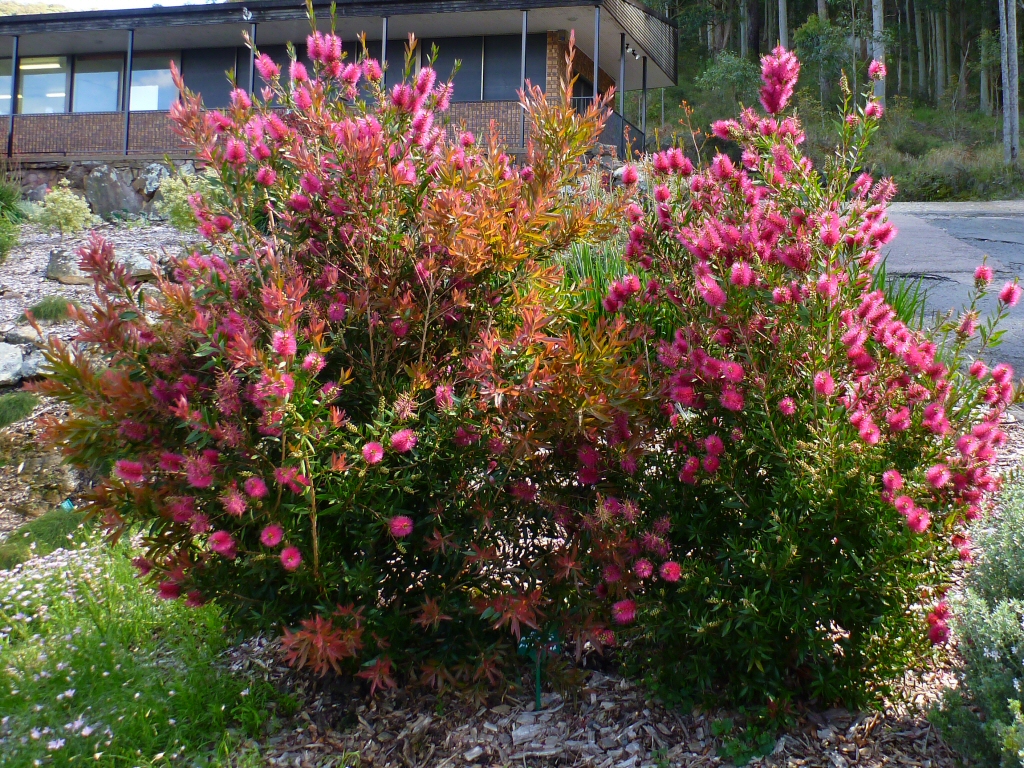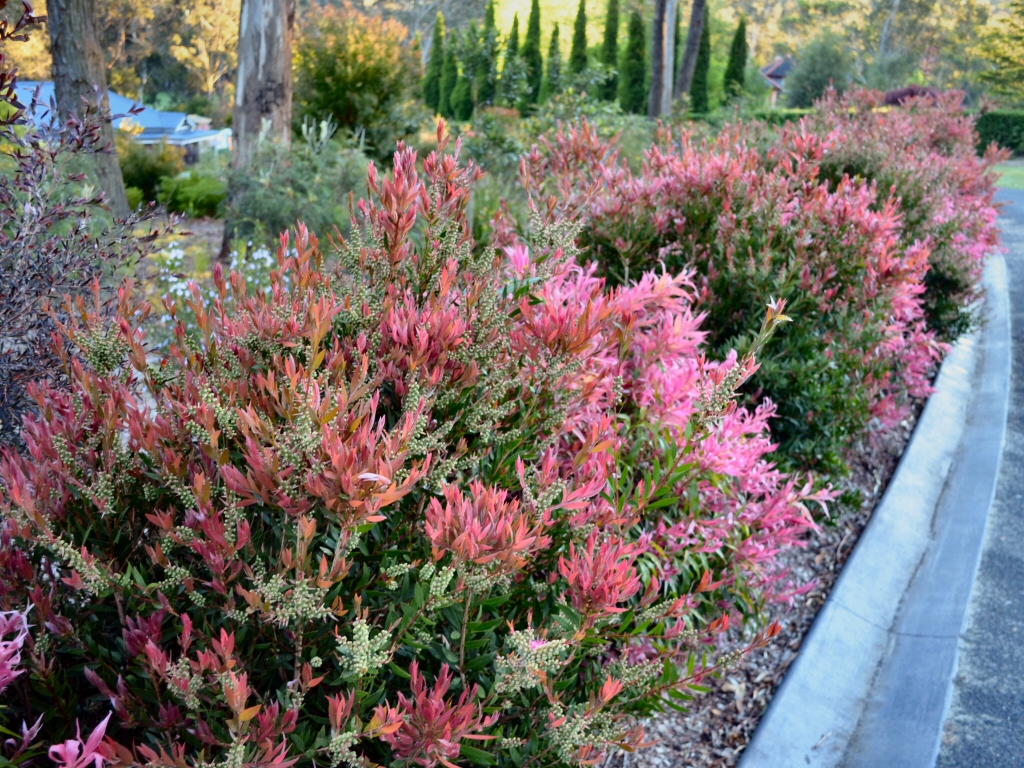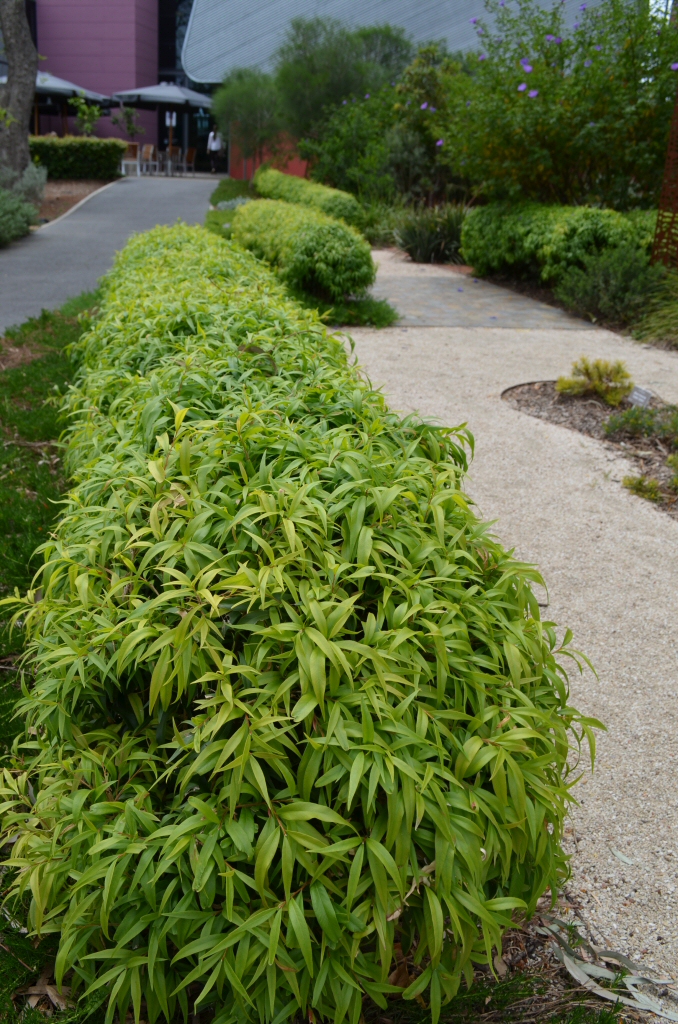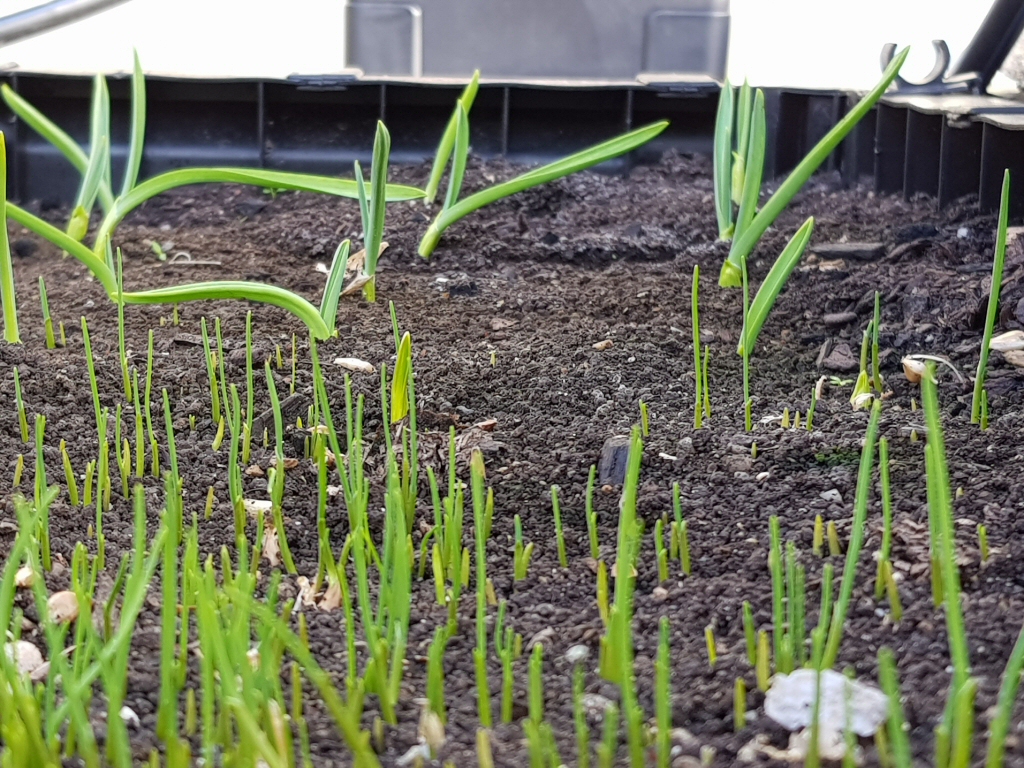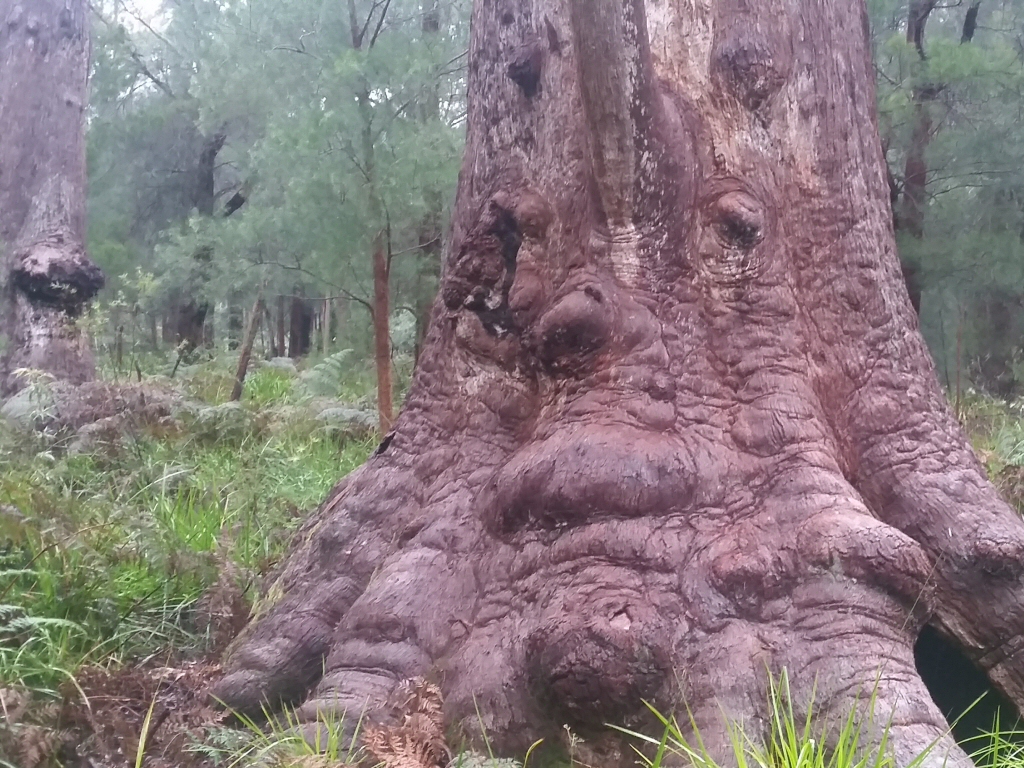Using Native Plants in Place Of Exotics
I love exploring creative ways to use Australian native plants in place of exotics. Working on ideas for my new plot down in Tasmania is proving to be an exciting opportunity to experiment with garden design in a different climate using a range of native plant cultivars as well as the unique flora of my local area.
One of my favourite past projects involved designing a garden a few years ago in the Southern Highlands of NSW where I was given a brief to use all native plants to create a garden which also drew on more traditional elements of formal and European garden design. Seeing an idea go from ideas and discussions to an established garden is always an exciting process and I love sharing what I’ve learned with others beginning their garden journey or looking to update their existing garden.
This project was a great chance to use a range of new cultivars that have come onto the market, as well as some older tried and tested varieties. There were two newish Callistemons I particularly wanted to use for their foliage colour and for their growth habit in this garden- Great Balls Of Fire, and All Aglow.
These two cultivars are fantastic to use for hedges and screens as their unique bright red foliage creates a spectacular display throughout the warmer months of the year, each time you get a burst of new growth (a judicious dose of native plant food such as Bush Tucker will help make this happen). ‘Great Balls of Fire’ makes a great landscape or feature plant for this reason, with a compact and dense growth habit it’s ideal for screening or hedging and can be pruned to maintain the desired growth habit and size. It’s a great frost hardy, ultra tough low maintenance plant which will thrive for years once established, creating a lovely display with the rich pinks and reds of the new foliage growth.
‘All Aglow’ is a fantastic new ‘Gardening with Angus’ variety and also excellent for hedging and screening, as well as for use as a shaped feature plant. The foliage glows with warm pink and orange-bronze tones for year round colour, and unlike some older varieties it has the added appeal of the classic bottlebrush flowers in a deep pink which appear through Spring.
Pictured here is an informal hedge I created where I alternately planted ‘All Aglow’ and ‘Great Balls of Fire’ for the effect created by the subtle shades of the foliage, and for the flowers of ‘All Aglow’ which add an extra pop of brilliance in Spring as well as attracting birds, insects and other wildlife. Combining the two varieties in this planting is a great way to show off the beautiful autumn tones of the foliage as they subtly change throughout the year, and worked very well to create a hardy and low maintenance screen. This is a great alternative to using conifers and other exotics as hedges and screens, and both of these Callistemon varieties are ideal for this use.
Both varieties are easy to establish and maintain and useful for small or larger areas. The dense branching growth habit of both makes them great wildlife habitat and the flowers of ‘All Aglow’ provide a food source which is very attractive to native birds, bees and other insects. ‘All Aglow’ will produce flowers in its second year, while ‘Great Balls of Fire’ can flower occasionally but will not usually if maintained as a hedge.
To create a more formal hedge the plants should be tip pruned regularly while establishing to encourage dense new growth which can then be shaped and maintained as required. For an informal screen simply prune back just behind flowers once they have finished, and give plants a good feed with Bush Tucker to encourage strong new growth and abundant flowering.
Get your own native garden dreams happening now- there’s an offer now through our online store – buy any 12 plants from our Affordable Tubes range and receive a free Bush Tucker fertiliser with your order, enough to get your own native garden project going today!
For more info on both plants head to the Gardening with Angus plant database:
Callistemon ‘Great Balls of Fire’
Preparing For Winter
Winter is here, and I’m into my first one in Tasmania. It is a time of crisp mornings and especially short days being a lot further away from the equator. I am loving the opportunity to grow good garlic in the cooler climate I am gardening in these days. If you have never had a go at growing garlic it is not a difficult proposition. Take a healthy garlic bulb and split it into individual cloves which should be planted with the pointy end up and about 2cm deep (ie the pointy end is 2 – 2.5cm below the surface. Cheap supermarket garlic is often imported and has been treated by quarantine authorities to make it impossible to propagate from so source your planting stock from a reputable local source.
As well as growing from garlic cloves the flower heads of garlic also produce tiny little bulbs (called bulbils) that can also be used for propagation although it will take 2-3 years for them to grow into a full sized garlic bulb. I liquid feed my garlic crop regularly through the winter to keep it growing vigorously, the liquid I harvest from my worm farm is perfect for this operation.
In other winter preparation hessian sacks put up in a cylinder around new plantings is a great way to protect against frost. I am also in full swing with a variety of winter vegetables as well such as mustard, broccoli and kale. Happy gardening!
Western Australia Tour
I’ve been working away on another project which I’m really excited to share with you, a little sneak preview of my next adventure, an intimate and unique plant hunting adventure on the South West Coast of Western Australia. I’ve been lucky enough to spend time in Western Australia over the past 30 years exploring the unique and diverse flora and landscape of many regions of this amazing continent, and one of the places I continue to return to at every opportunity is the south west of WA, and in particular its stunning coastline. I’ve done a lot of trips there in the past, documenting and learning about our native flora, and have also led tours of others who share my excitement in seeing the fascinating natural phenomena of Spring in WA, when what appears to be an infertile and barren desert-like environment suddenly explodes with colours, flowers and life. Spending even a few moments looking closely at a wild orchid, or the appropriately named Royal Hakea is enough to know that our native flora are as beautiful and ornate as any exotic species.
There is so much to be learned and so much joy in exploring out in the field, and while my background and formal education is in the scientific method I also have deep respect and appreciation for the indigenous peoples of this country and for traditional knowledge and uses of the native flora and landscape of Australia.
I’ve met many wonderful people in my travels who share this passion and this tour will allow me to share their knowledge and work with a small group, getting hands on learning plant hunting, identification and the traditional and current uses of native plants. We’ll get in depth in exploring the science behind the many uses of native plants and spend time learning about extracting the compounds these plants produce in the form of essential oils. Spending time in the bush is the best way to really learn about and appreciate the biodiversity of the ecosystems and plant communities of a region, and the experience of seeing wildflowers blooming in their native habitats is a once in a lifetime experience. The ancient landscape of Western Australia is one of the top places in the world to do this – (we will be going to the Fitzgerald River National Park which is declared part of a Unesco listed ‘biosphere. to recognize its extraordinary biodiversity).
Over the years I’ve found some wonderful secret spots of my own for wildflower hunting, and I’ve learned a thing or two about the seasonal and yearly changes to the landscape. An area that was full of blooms one year can be barren the next, depending on bushfires, rainfall, human activities and many other factors. This tour gives me the chance to bring a group of like-minded people with me on my journey by joining me on my next adventure! I’ll be releasing more information on this soon so keep an eye out for details on this one.
In the meantime, if this tour sounds like you please email me at angus@gardeningwithangus.com.au and I will put you on the list for a place on the tour.
What we are listening to….
Coming in to Winter and these longer nights is a great opportunity to contemplate, plan for Spring, and of course to keep learning. The Royal Botanic Garden of Sydney (RBGS website) have created a new podcast called ‘Branch Out’ which I’m looking forward to checking out; listen to it here! https://www.rbgsyd.nsw.gov.au/science/branch-out
The first episode “No Plants No Medicine” is available and free to listen to now, and explores the fascinating science behind an amazing range of the useful compounds produced by plants.
All around Australia and the rest of the world I see more and more signs of a growing movement towards working with nature, local growing and culture, appreciation for what plants and gardening can offer in improving our lives. It’s a wonderful thing to be a part of and I’ll be sharing more on this in future on my website as well as here in the monthly newsletter.

